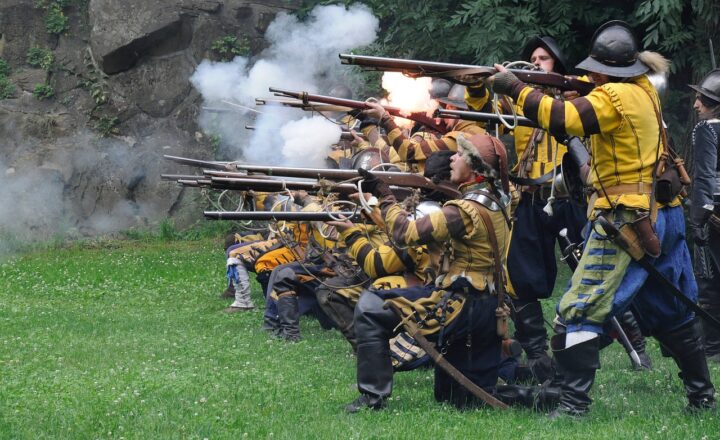The Industrial Revolution: How It Transformed Society and Shaped the Modern World
November 14, 2024

The Industrial Revolution was a period of profound change that began in the late 18th century and continued into the 19th century, marking the transition from agrarian societies to industrialized ones. This remarkable transformation affected nearly every aspect of daily life, including the economy, the workplace, social structures, and even the environment. In this article, we will delve into the key features of the Industrial Revolution, its far-reaching impacts, and how it laid the groundwork for the world we know today.
1. The Beginnings of the Industrial Revolution: Context and Causes
To understand the significance of the Industrial Revolution, we must first examine the conditions that made it possible. Several factors contributed to this seismic shift, including:
- Agricultural Advances: Innovations in farming techniques, such as crop rotation, selective breeding, and the mechanization of agriculture, led to increased food production and reduced the need for agricultural labor. This provided a surplus of workers who could migrate to cities in search of employment.
- Technological Innovations: Inventions such as the steam engine, spinning jenny, and power loom revolutionized production methods and increased efficiency. These technologies were key to enabling mass production, which in turn fueled economic growth.
- Access to Resources: The availability of natural resources like coal, iron, and waterways facilitated manufacturing processes. Close proximity to these resources allowed factories to flourish, particularly in regions such as Britain, which possessed abundant coal deposits and navigable rivers.
- Economic Factors: The rise of capitalism, combined with a growing middle class obsessed with consumerism, created an environment ripe for industrialization. As demand for goods surged, so did the opportunities for profit in investment and trade.
- Political Stability: The relative political stability in Britain, following a series of reforms and the establishment of parliamentary rule, created a conducive environment for industrial growth and investment in new technologies.
These conditions converged to pave the way for the Industrial Revolution, a period beginning in the late 1700s that would fundamentally alter the course of history.
2. Key Innovations and Technologies
The Industrial Revolution was characterized by numerous technological innovations that transformed industries.
a. The Steam Engine
The steam engine, perfected by James Watt in the late 18th century, became the catalyst for industrialization. It allowed for:
- Increased mechanization of factories, enabling them to operate more efficiently and produce goods on a massive scale.
- Improved transportation with steamships and locomotives, which connected rural areas to urban centers and facilitated the movement of people and goods.
b. Textile Innovations
The textile industry was revolutionized by several key inventions:
- The spinning jenny, developed by James Hargreaves, allowed one worker to spin multiple spools of yarn, drastically increasing output.
- The power loom, invented by Edmund Cartwright, mechanized the process of weaving cloth, significantly speeding up production and reducing labor costs.
c. Iron and Steel Production
The production of iron and steel saw remarkable advancements, including:
- Henry Bessemer’s process for mass-producing steel, which made it cheaper and more readily available, facilitating the construction of structures like bridges and factories.
- Innovations in coal mining, allowing for more efficient extraction and processing, further fueling industrial growth.
These innovations were more than mere curiosities; they fundamentally changed the way products were made and marketed, setting the stage for the emergence of modern consumer society.
3. Societal Impact of the Industrial Revolution
The Industrial Revolution not only transformed economies but also had a profound influence on society, leading to:
- Urbanization: The migration of populations from rural areas to urban centers in search of work led to rapid city growth. Cities like Manchester and Birmingham expanded quickly, but often with inadequate infrastructure, leading to social issues and poor living conditions.
- Changes in Labor Practices: Factory work represented a significant shift from agrarian labor. Long hours, dangerous conditions, and low wages characterized factory jobs, leading to the eventual rise of labor movements and calls for workers’ rights.
- Social Mobility and Class Structure: The rise of a new middle class, comprising industrialists and business owners, created shifts in social dynamics. This mobility allowed for improved standards of living for some, while others – particularly factory workers – often remained impoverished.
- Cultural Shifts: The consumer culture emerged as people began to prioritize material goods, symbolize success, and leisure activities. New forms of entertainment, leisure, and art flourished, inspired by the changes in society.
This transformation led to a complex web of consequences, affecting everything from family structures and education to politics and government regulations.
4. Environmental Consequences
The environmental impact of the Industrial Revolution cannot be overlooked. Rapid industrialization led to:
- Pollution: The rise of factories resulted in significant air and water pollution, with coal smoke and industrial waste heavily damaging local ecosystems.
- Urban Overcrowding: Rapid urbanization resulted in squalid living conditions, deteriorated infrastructures, and increased strain on public health services.
- Depletion of Resources: The demand for raw materials led to intense exploitation of resources, raising concerns about sustainability and conservation that resonate to this day.
These environmental consequences sparked early movements towards environmentalism and laid the groundwork for later discussions about sustainable practices.
5. Lasting Legacy of the Industrial Revolution
The influence of the Industrial Revolution is still felt today. The fundamental changes in societal organization and industrial capability set the stage for:
- Globalization: Developments in transportation and communication facilitated a global marketplace, allowing businesses to operate on an international scale.
- Technological Innovation: The spirit of innovation established a foundation for technological advancements seen today, ranging from computers to biotechnology.
- Regulatory Frameworks: The labor movements that emerged as a response to exploitative practices led to important legislation on workers’ rights, health and safety standards, and environmental regulations.
- Cultural Shifts: Our notions of consumerism, economic structure, and social relations were significantly shaped by the changes wrought by the Industrial Revolution, influencing contemporary lifestyles and values.
As we examine the world today, it is impossible to separate its realities from the origins laid during this transformative period.
Conclusion
The Industrial Revolution represents a pivotal moment in world history, transitioning society from agrarian lifestyles to dynamic industrial economies. With its wave of innovation, urbanization, and social transformation, it laid the groundwork for the modern world. As we navigate the complexities of our current global landscape, understanding the roots of these changes provides essential insights into the ongoing impact of the Industrial Revolution on contemporary society. By recognizing its challenges and accomplishments, we can build a more sustainable and equitable future that continues to honor the lessons of the past.








